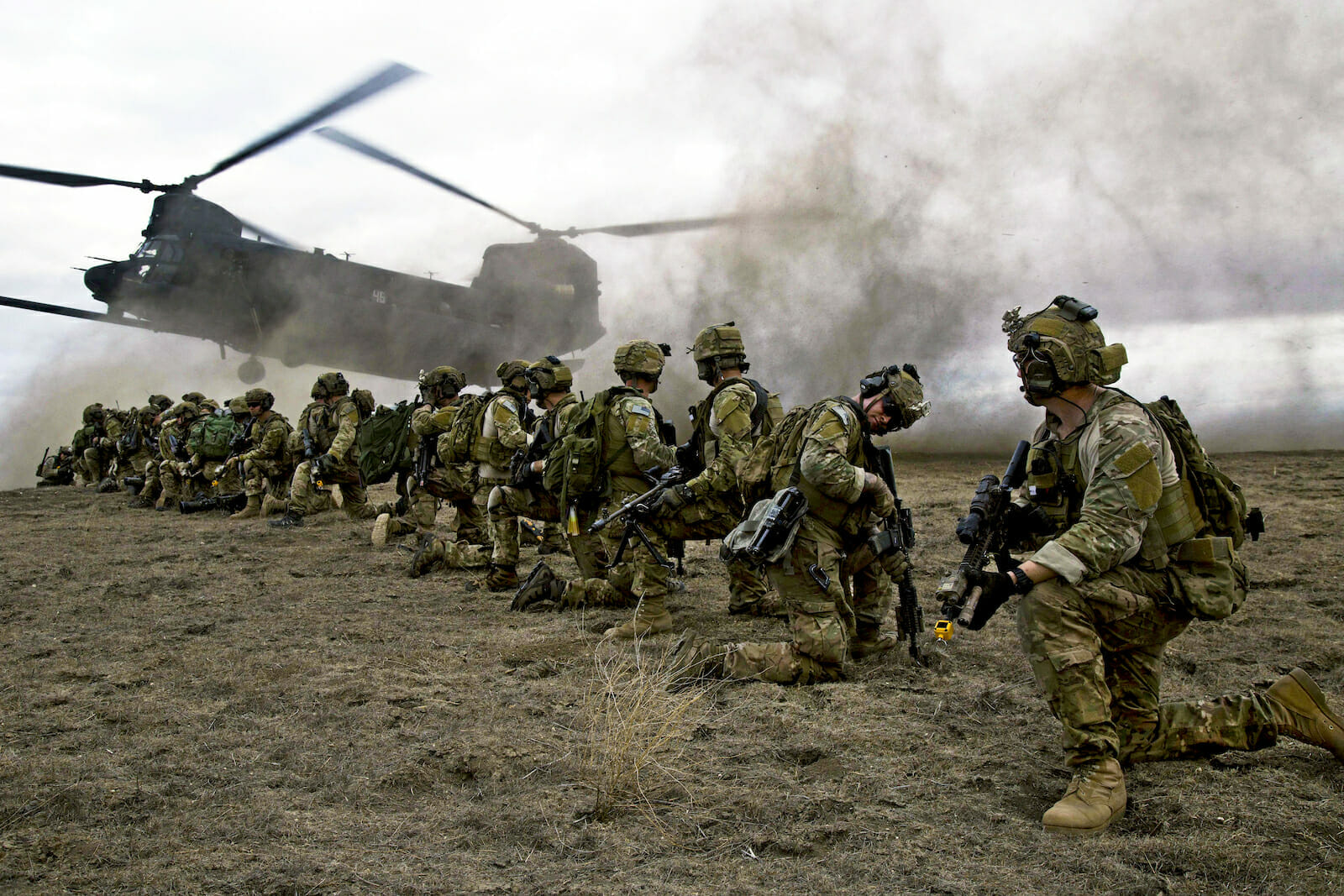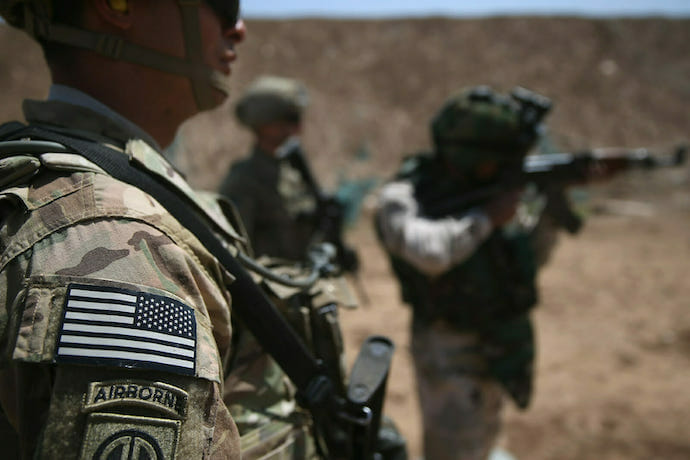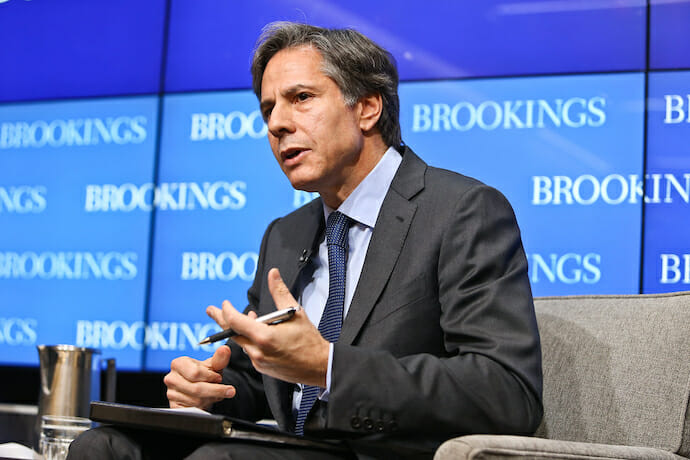
Will Biden Return to Humanitarian Interventions?
In the 1990s, the single most important change to the dominant Westphalian norm of national sovereignty was formulated and adopted by the international community. The principle of R2P became a unanimously-adopted asterisk on the end of national sovereignty, a form of international social work done by the business end of a JDAM whenever a regime knowingly, and purposely conducted crimes against its own populace.
The heyday for R2P actions in American foreign policy was under the Clinton administration, which played a significant role as the progenitor of and beta-tester of international humanitarian interventions. However, after four years of America’s withdrawal from the world stage under Donald Trump, Joe Biden offers a strong return to international affairs by the American foreign and defense organs. Does this also necessarily mean a return to the humanitarian interventions of the 1990s, also known as R2P?
“Responsibility to Protect” (R2P) was born from some of the worst atrocities of the 1990s. With the collapse of the bipolar order that defined the Cold War, a Pandora’s box of sectarian and nationalist violence erupted around the world. The most notable of these events was the genocide in Rwanda and the numerous ethno-religious wars that erupted as the former Yugoslavia underwent Balkanization in its truest form. In both cases, tried and true forms of UN peacekeeping utterly failed and varying interventions were necessary to stem the bloodshed.
In two cases, the international community stood by as mass murder occurred, unabated. Srebrenica and Rwanda will forever be a stain on the collective consciousness of the world, especially since international peacekeeping forces were already in place. In Srebrenica, peacekeepers stood aside and allowed mass murder to commence. In Rwanda, the slaughter of 10 Belgian peacekeepers was enough to pause any additional intervention by Western nations. These two incidents – occurring back-to-back in the years 1994 and 1995 – would prove to be fundamental in ushering in revolutionary ideas on the use of peacekeeping and military force to abate humanitarian crises in the future.
If Srebrenica and Rwanda embodied one extreme of a spectrum, Kosovo was the exact opposite. Coming in 1999, the intervention in the Serbian province was done unilaterally by NATO, without a UN resolution. NATO justified its intervention on the basis that something had to be done, and previous diplomatic efforts to find a resolution had failed. However, it is fairer to describe the Rambouillet Talks in March as being diplomacy done to justify war than to avert it. It demanded a NATO administration of Kosovo, as well as the placement of 30,000 soldiers in the province. This solution was more akin to the Austro-Hungarian ultimatum that sparked the First World War than a serious attempt to forge peace.

During the Kosovo intervention and immediately afterward, the idea of a permanent justification for international interventions in internal conflicts where one side is clearly committing crimes against humanity began to first emerge. In 1999, then-UN Secretary-General General Kofi Annan began to redefine traditional ideas of national sovereignty, accepting the intervention in Kosovo as fait accompli to be justified after the fact. One year later, he proposed a now-famous question to the UN General Assembly: “…if humanitarian intervention is, indeed, an unacceptable assault on sovereignty, how should we respond to a Rwanda, to a Srebrenica – to gross and systematic violations of human rights that offend every precept of our common humanity?”
Far from being rhetorical, Annan’s questions launched an international conference to propose a framework under which armed interventions could be justified without also nullifying national sovereignty. Adopted unanimously by world leaders at a 2005 UN conference, responsibility to protect was adopted with the understanding that future interventions would be justified if it could be shown that previous diplomatic efforts had failed, that a state was conducting crimes against humanity against its own population, and that the international community had a responsibility to act to ensure that the clarion cry of “never again” actually meant something.
Even before R2P was being formulated, humanitarian intervention played a significant role in American domestic politics. Potential intervention into the war in Bosnia played a prominent role in the 1992 presidential election. At the time, then-President Bush and then-Governor Clinton used the issue to differentiate their foreign policies with the divide between the two being so broad as to be insurmountable. Bush had taken the now-infamous stance of “we don’t want to put a dog in this fight,” while Clinton argued for American arms to bring a speedy end to the ethnic warfare consuming the southeastern periphery of Europe.
This political divide – Republicans arguing for an aloof role and Democrats displaying interventionist tendencies – has remained constant for the better part of 30 years.
The Clinton administration, perhaps more than any other player on the world stage, was instrumental in laying the groundwork for R2P. It was interventions in Bosnia and Kosovo, mostly successfully, that gave credence to the development of R2P as a pillar of international relations. Military arsenals developed to halt a Soviet menace that never materialized were repurposed to halt wholesale massacres in the Balkans, and NATO found a new purpose as a policeman in states newly emerged from the Eastern Bloc. The actions led by the Clinton administration were later incorporated into the three pillars of R2P, often lending legitimacy to the fait accompli of the 1990s.
Under the Bush administration, military intervention abroad continued and entered into full-blown adventurism. However, rather than utilizing military force in pursuit of humanitarian ideals, it was utilized as a cudgel to enforce neo-conservative ideology abroad. Though the attacks on Afghanistan were largely viewed as rightful retaliation after the terrorist attacks on 9/11, the venture into Iraq was, and still is, lunacy on the level of Napoleon III’s adventures in Mexico. It was nothing less than the attempt to force democracy by way of the business end of a rifle. However, neither of these could be termed as R2P actions, and the Bush administration would not take any such actions abroad.
That’s not to say R2P wasn’t recognized as a tool that could be used by the hard power centric Bush administration. In early 2008, Cyclone Nargis devastated the Irrawaddy Delta in Burma. Despite a death toll numbering as high as 140,000, the military junta refused any outside assistance. Discussions were held over the idea of “coercive aid,” where the United States or other like-minded nations would violate Burmese airspace in order to deliver aid to affected areas. By all accounts, these discussions rested on utilizing R2P principles to garner international legitimacy and prosecute the mission at hand. No actions were taken, though.

With the inauguration of Barack Obama in 2009, the pendulum again swung back towards interventionist tendencies. However, over eight years, the capability and opportunities for R2P would never provide the same fortuitous alignment as the Clinton administration had received. The Obama administration co-led an international intervention in Libya, though the mission quickly went from protecting civilians to prosecuting regime change against Col. Muammar Gaddafi.
Perhaps the most memorable aspect of R2P under the Obama administration was the infamous “red line” rhetoric as it pertained to the use of chemical weapons in the Syrian Civil War. Repeatedly, Washington warned Damascus that the use of chemical weapons against its own populace would invite an armed intervention. When these weapons were used, Damascus was met by a resounding silence. Crippled in part by a hostile Congress and a war-weary public, the “red line” proved to be yet another goalpost with a tendency to move at whim, a hallmark of post-Cold War American statecraft.
It should come as no surprise that the Trump administration broke with previous Republican administrations, but also operated in its own quixotic manner when it came to R2P. Whereas the Obama administration threatened the use of force against Syria, the Trump administration launched a single attack on the Shayrat Airbase in Syria after the use of chemical weapons by Assad’s regime. However, this attack was more performative than anything substantial. Prior to the strike, Washington had warned Moscow the attack was incoming, and Moscow had plenty of time to relay this information to Assad. A few hours after the attack, the Syrian Air Force was once again using this base to launch further strikes against rebels.
Was this R2P? Hardly. This was kabuki theater with cruise missiles. All flash, no substance, and likely done to one-up his predecessor, the Shayrat strike was Trump’s foreign policy in a nutshell.
Is the Biden administration ready to embrace R2P 2.0?
The first slate of foreign policy appointees by the incoming Biden administration is a who’s-who of stable, solid stewards of American statecraft. Antony Blinken, Linda Thomas-Greenfield, and Jake Sullivan are seasoned, rational professionals in the foreign policy arena. In a way, these are also profoundly boring announcements, coming on the heels of four years of unmitigated chaos and amateurish appointments that defined Trump’s foreign policy. However, for many at home and abroad, this is a much-welcomed change of pace.
However, these appointments are one part of the story. Already, the Biden administration has made it clear that they intend to put America at the forefront of international relations, whether they be bilateral or multilateral. The Biden administration is promising a more muscular presence in the UN and its affiliated organs and agencies, a return to American-led negotiations and agreements, and a presence by the United States at as many conferences and meetings around the world as possible. In short, the United States is planning on making a big comeback in a big way.
One item of note is the history these nominees have with R2P. Antony Blinken repeatedly argued for armed interventions abroad during the Obama administration, and multiple sources – including his own remarks – point to this being a deeply-held belief fostered in part by his stepfather, Samuel Pisar. An advisor to John Kennedy, Samuel Pisar was also a Holocaust survivor who reportedly instilled a belief in Blinken that America’s might should and must be used for noble ends. While this is by no means a clear crystal ball, it certainly does indicate that one of the most important voices in the Cabinet has a tendency to support R2P interventions.
Perhaps no one story is more impressive than Linda Thomas-Greenfield’s experiences during the Rwanda Genocide. During the opening phases of the 100 days of slaughter that consumed the small country in 1994, Linda Thomas-Greenfield was held at gunpoint in Kigali. Maintaining her composure, she managed to talk the man out of killing her. Without a doubt, this makes Linda Thomas-Greenfield one of the most impressive people to ever work within the U.S. Foreign Service. The experience deeply impacted her. “It changed my life forever,” she attested years later.
These experiences, combined with a track record that demonstrates consistent advocacy for armed intervention, raises one very important question: Is the United States about to enter a new phase of support for R2P missions?
It is nearly impossible to forecast with any likelihood if the Biden administration will embark on R2P ventures abroad. After all, a crisis is such in large part to its unforeseen and unpredictable nature. However, the Biden administration is demonstrating the first signs that an R2P alignment is in place. Between promising to retake the lead diplomatically to a Department of Defense that has begun to embrace human security as its underlying operating assumptions, the Biden administration certainly has a fortuitous alignment of diplomatic and defense leadership that would be open to R2P missions.
Memories of the failed Syrian “red line” enforcement remind us all that action is not necessarily at the whim of the president. Congressional buy-in is essential, even if for nothing more than to save headaches later from hearings or budgetary hijinks. If popular opinion cannot be secured either, a president might very well burn inordinate amounts of political capital to save lives abroad only to lose in midterms or re-election. While Biden still has a good deal of respect in both chambers, the poor showing by Democrats in the 2020 elections mean that any effort to embark on R2P missions will be an uphill climb from the very beginning.
It is completely possible that no opportunity will ever present itself for such a mission. The underlying fallacy to R2P is that such missions are only launched where they have a possibility of succeeding. The reason why no such mission has been launched in Syria is because it is neither politically nor militarily feasible in a country riven with sectarian fault lines and a top-notch air defense system.
A confluence of opportunity would have to occur, domestically and internationally, for the Biden administration to be able to pursue a new R2P policy. However, the foundation has been laid and it is sound. Under Joe Biden, it’s possible that we will see a new Bosnia or Kosovo should the opportunity arise. His initial tranche of appointees certainly has the professional credibility, personal conviction, and trust of the president-elect to make R2P a likely course of action for future conflicts around the world.

